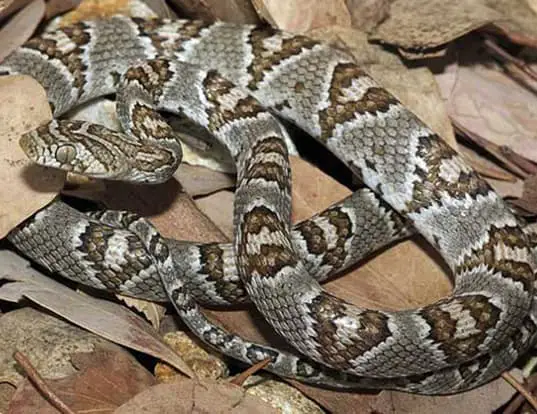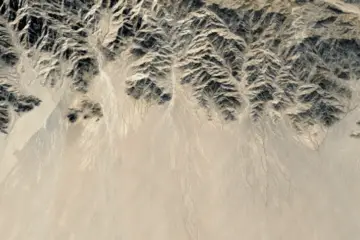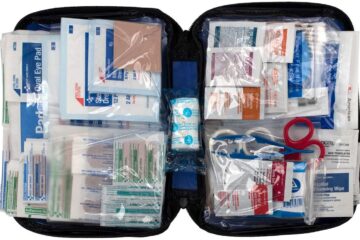This section will briefly describe the Gila Monster and some of the southwest’s other venomous desert creatures. not to try and scare you, but rather to let you know what to be aware of in your desert travels.
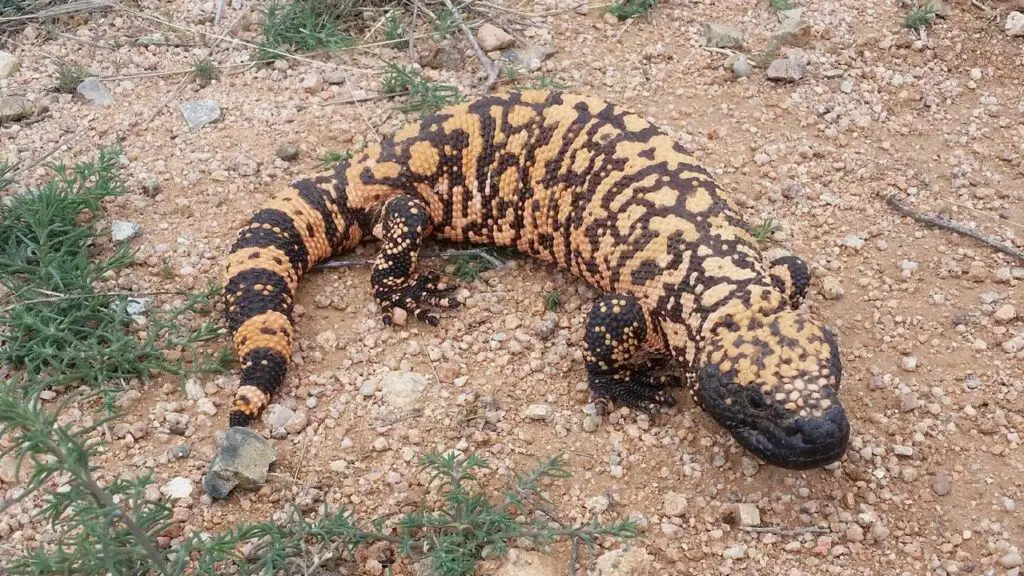
Josh Olander, CC BY 4.0,
Gila Monster
The Gila monster’s range is mainly Arizona and Mexico, the extreme southeastern corner of California, the southern tip of Nevada, and the southwestern corners of Utah and New Mexico.
The Gila monster can grow to almost two feet in length. They prefer rocky foothills & arroyos, from low deserts to about 5000 ft.
The bite is extremely painful and about as toxic as a western diamondback, although less venom is released. They bite quickly and latch on, sometimes their mouths must be pried open. They grind their jaws into the bite and release venom through grooved bottom teeth.
The Gila monster is not normally aggressive, but watch where you put your hands and feet when traversing rocky slopes. They are active mostly in the morning hours during the spring.

David Jahn – Flickr, CC BY-SA 2.0
Sonoran Coral Snake
The Sonoran coral snake’s range is from west central down into southeastern Arizona, Mexico and the southwestern corner of New Mexico.
The Sonoran coral snake can reach lengths of nearly two feet. They are quite slim, about the thickness of a pencil or maybe a pinkie finger. They have a varied habitat, including rocky lowlands and foothills below 6000 ft.
They are related to the cobra, with a venom twice as potent as the western diamondback. Due to their size and shy nature, human bites are rare. When startled, the Sonoran coral snake will hide its head under its body, coil its tail and emit a popping sound, accompanied with a foul odor. They are usually nocturnal.

Victorrocha CC BY-SA 3.0,
Sidewinder
The Sidewinder ranges from southeastern California into Mexico and western Arizona, southern Nevada and the southwest corner of Utah.
The Sidewinder is a member of the rattlesnake family, which are known as pit vipers.
It is unique from other rattlesnakes in the way it moves, sideways, and the two small bumps or horns above the eyes. Smaller than other rattlers, it can reach lengths of about 32 inches. Most abundant in sandy lowlands. Mostly nocturnal, they can sometimes be seen warming up in the sun on cool mornings.
The Sidewinder can be quite aggressive, in fact I once had one pursue me for unknowingly walking too close to it. I had no choice but to quickly dispatch it with a large rock.
Western Diamondback Rattlesnake
The desert southwest is home to many species and subspecies of rattlesnakes. They usually prefer brushy lowlands adjacent to rocky slopes, although they are found in many habitats and life zones. They can also be found quite high in elevation. I once saw a timber rattler at approximately 7100 ft. elevation.
The venom is a powerful hemotoxin. A California species known as the Mojave green also has a neurotoxic component that can cause paralysis. Every year thousands of people in the US are bitten. Be very careful when traveling in rattlesnake country. Consider carrying a snakebite kit, here’s a traditional one, and here is one that uses the compression method to slow the venom’s spread. If bitten, stay calm, move slowly and as little as possible. Seek prompt medical treatment. See my post First Aid for exploring, prospecting and remote camping for more info on snakebite kits.
Rattlesnakes are not usually aggressive, most people are bitten by placing their hands or feet down without looking. Rattlesnakes blend well with their surroundings. Be especially careful on cool mornings when they are out basking and may be too lethargic to sound off a warning until you are almost on top of them.
Back fanged snake
Western Arizona,southeastern California and the southern tip of Nevada is home to a couple of species of back fanged snakes. The Sonoran Lyre snake and the Desert Hooknose snake. Although venomous, symptoms of a bite vary from none to localized swelling and numbness. Their venom is actually being studied for its possible anticancer and other therapeutic benefits.

Ken-ichi Ueda – CC BY 4.0
Black Widow spider
The Black Widow is very common in the desert southwest. From what I’ve seen they seem to be more abundant in rural urban areas than in the wild. They like sheltered areas amid rock, brush and old wood piles. When startled they can move very quickly. I once had one run across the back of my hand in a flash. More than 2000 people a year are bitten in the USA. Fatalities are extremely rare. The bite symptoms can be quite severe though, including abdominal cramps, intense muscle pain and spasms. They have a shaggy, disorganized web which is quite strong.
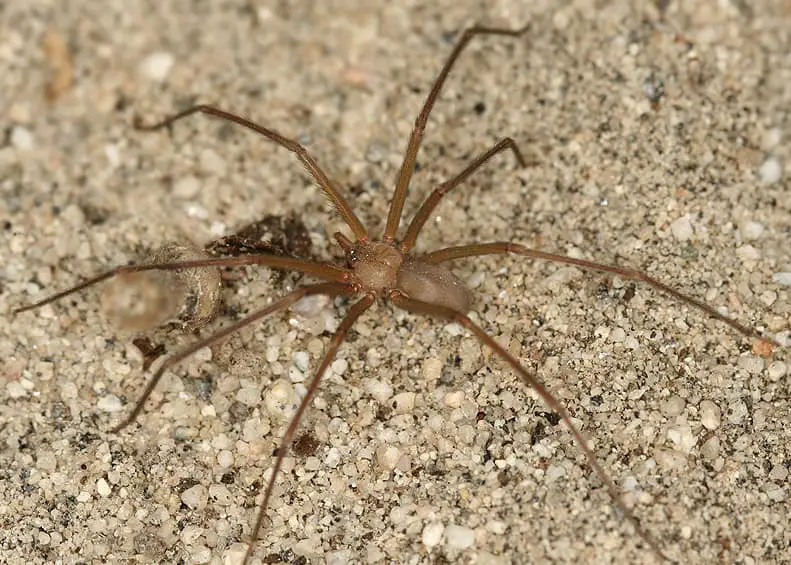
Desert Recluse spider
The Desert Recluse is found in southeastern California, western Arizona, southern Nevada, the southwest corner of Utah and into Mexico. A relative of the Brown Recluse, it’s bite also causes necrotic skin lesions, sometimes reoccurring. Often found among thick native vegetation and deadfall. It can also be found in and around pack rat nests constructed of brush and cactus.

Arizona Bark Scorpion
Also known as the Arizona Brown Scorpion, its range includes all of Arizona, the western half of New Mexico, adjacent to the southern border of Utah, the southern tip of Nevada, extreme eastern California along the Colorado river and into Mexico. The Arizona Brown is a small scorpion rarely reaching 3 inches in length. They are nocturnal.
Several thousand people are stung each year in the southwestern US. Fatalities are very rare. The sting can be extremely painful, with some people likening the sensation to jolts of electricity. Muscle spasms and partial paralysis of affected extremities is possible. Like all scorpions, they fluoresce a vivid green under an ultraviolet light. I carry a UV flashlight at night and it definitely cuts down on chance encounters. Especially when walking out of camp, half asleep, to relieve yourself.
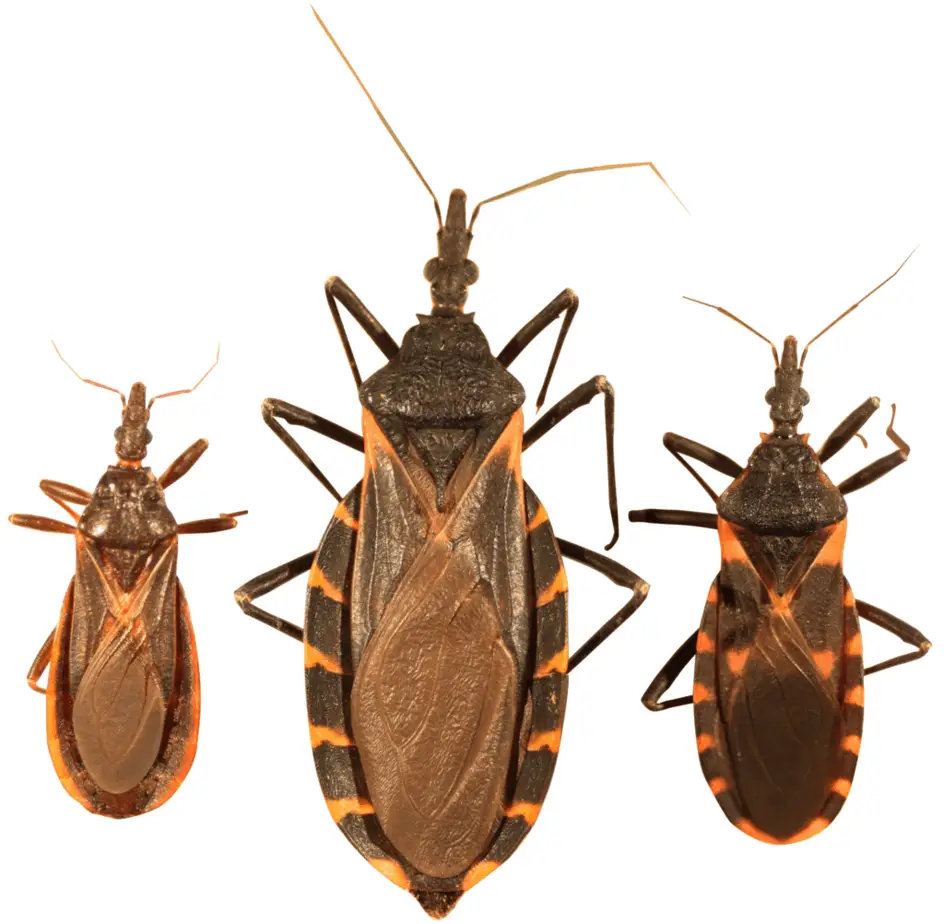
Kissing Bug or Conenose Bug
While not venomous, the Triatomine bug Is a particularly nasty insect. It is found throughout the southern US.
It feeds on the blood of mammals, including humans. They are nocturnal and are drawn to feed mainly by sight, heat and carbon dioxide.
The adult bug ranges from 1/2 to an inch in length, and fills up with blood much like a tick. The kissing bug can alight and feed around the mouth area (hence the nickname). They may defecate while feeding, the sleeping victim may then rub the bite area and inadvertently become infected with a parasite sometimes carried by the bug.The infection, called Chagas disease, may be unknown by the victim, and can eventually lead to heart failure and death.
Here is a link to a recent USAtoday article about the possible infection of hundreds of thousands of unknowing victims in the US alone.
Bees, wasps and hornets
Bee careful when in the vicinity of water seeps and springs. Bees and wasps also like to shelter close to the entrances of mine tunnels and shafts. The bees around these areas seem to become agitated easily. You never know, there could be Africanized bees in remote areas also.
If you are sensitive to bee stings consider carrying an antihistamine with diphenhydramine such as Benadryl, a topical ointment and possibly a venom extractor. Opinions are mixed on the extractor, although I do carry one. See my post First Aid for exploring, prospecting and remote camping for more info on venom extractors and snakebite kits.

